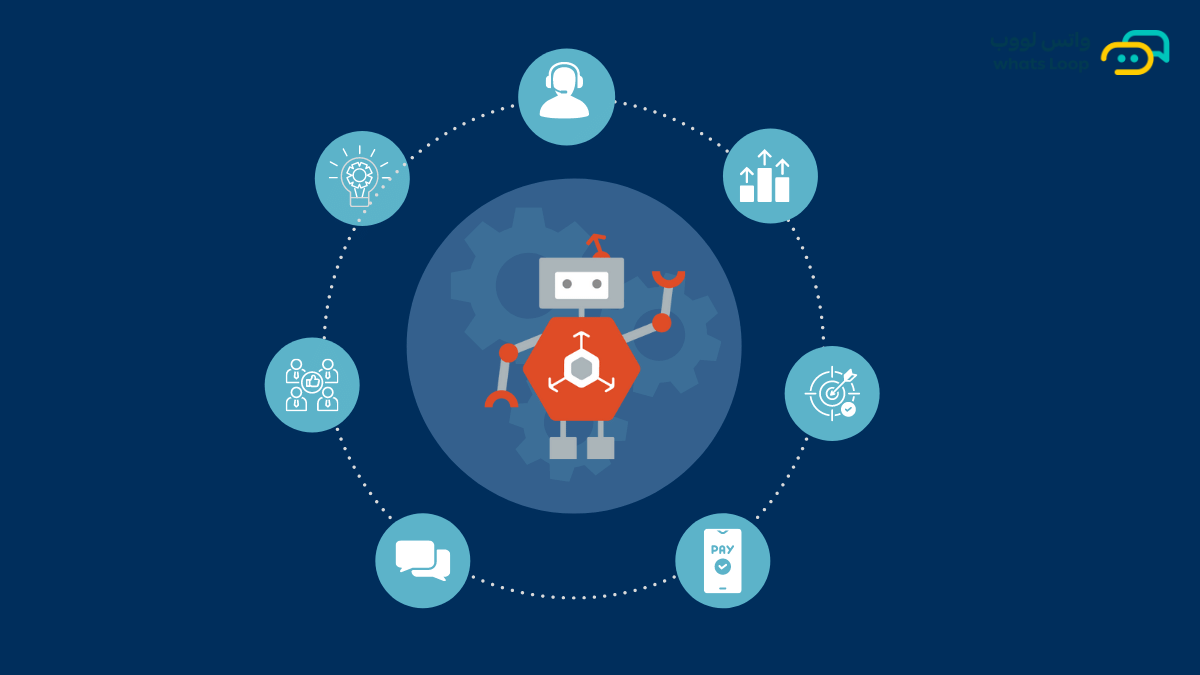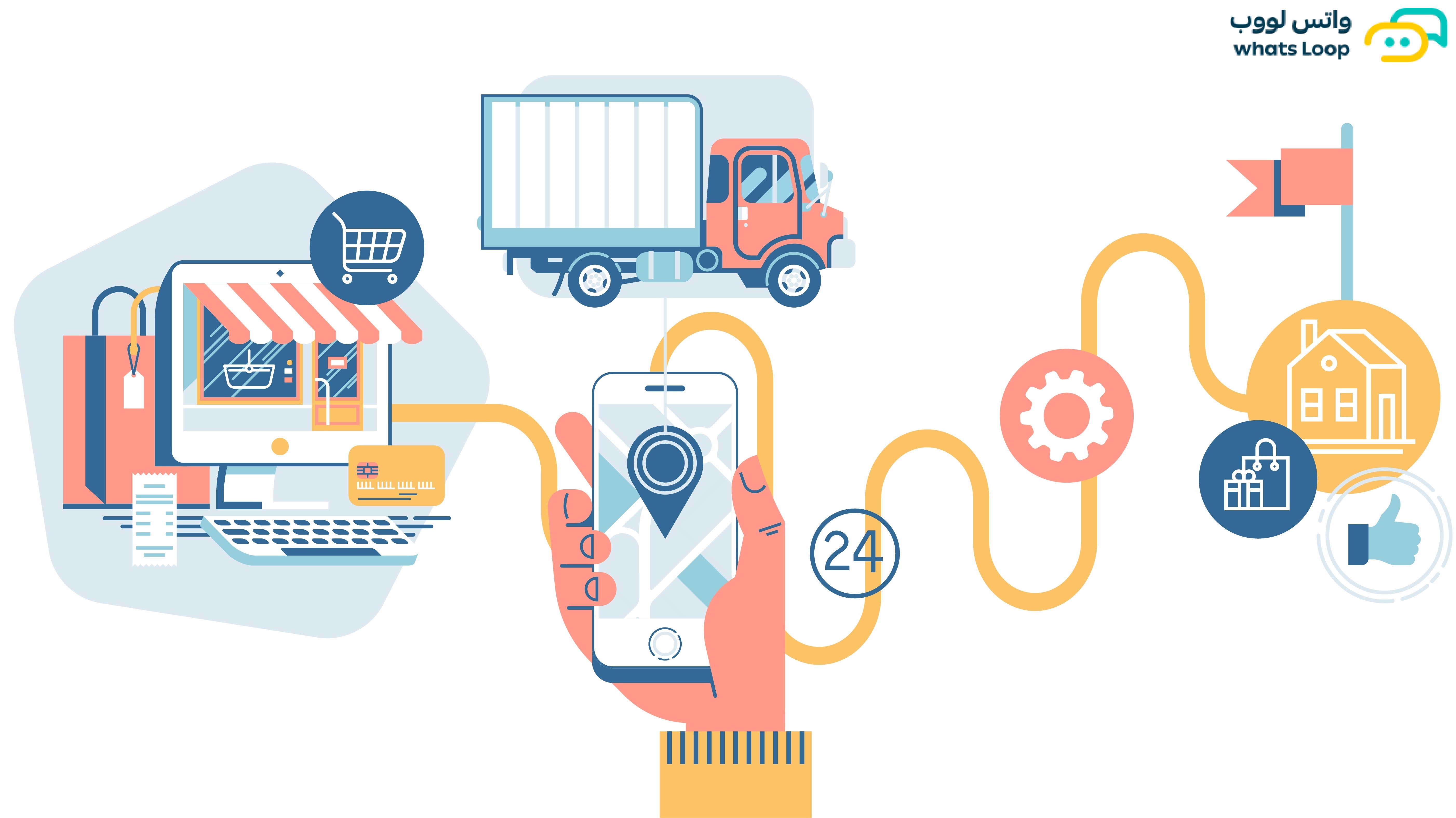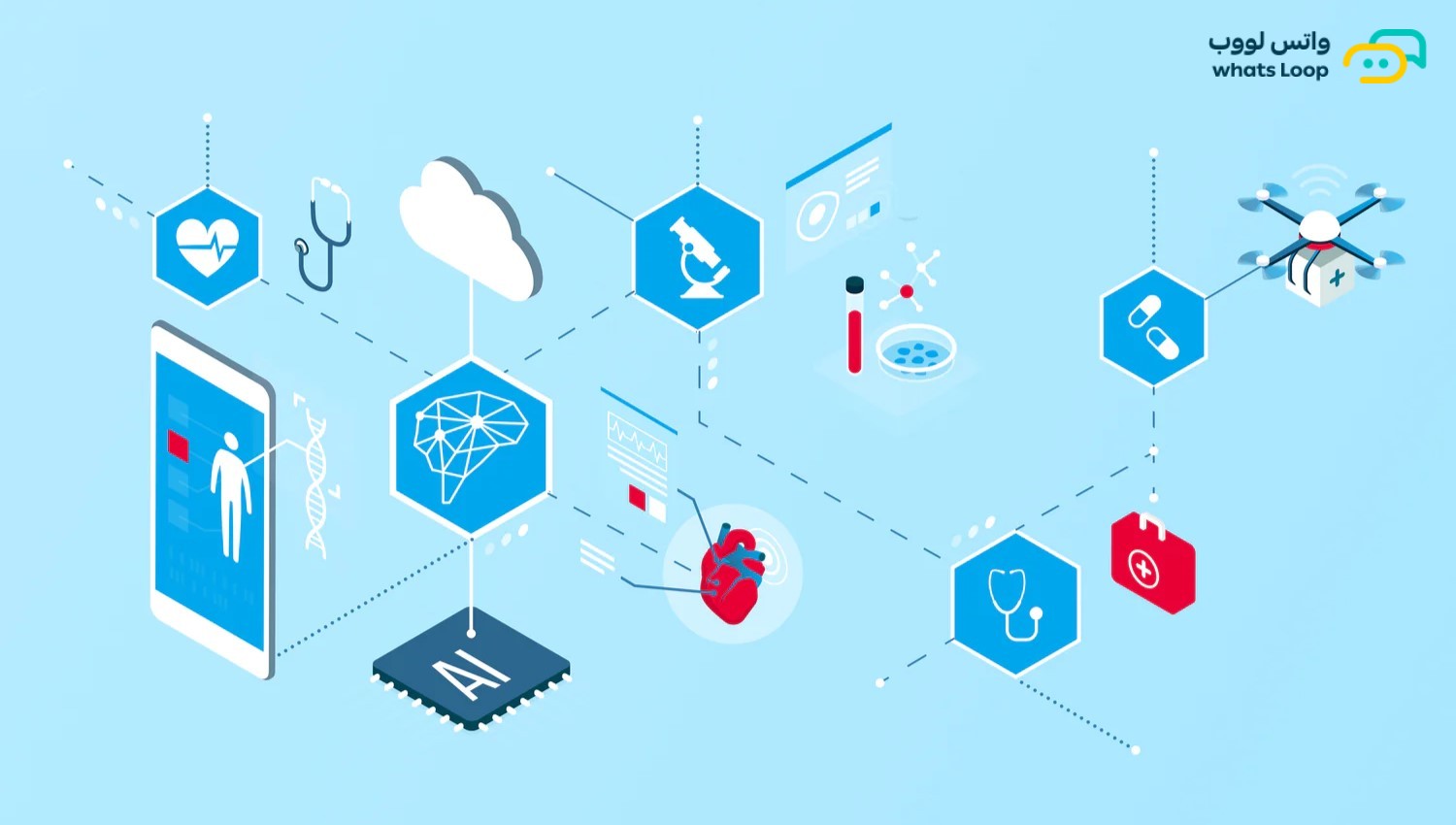Introduction:
E-commerce is one of the most important areas of business in the modern era, as it presents many opportunities and challenges for companies and business owners. With the increasing volume of e-business, e-commerce automation has become vital to improve efficiency and speed up operations.
Understanding Ecommerce Automation:
E-commerce automation is the use of technology to carry out business processes automatically, without significant human intervention. This aims to improve efficiency and reduce errors, contributing to improving the user experience and increasing business productivity.
How to use e-commerce automation:
1. Inventory Management System:
Smart inventory management systems can be used to automatically track and update inventory when you make purchases or sales.
2. Electronic payment processing:
Automation electronic payment systems facilitate online payments, improving the speed of procedures and providing greater security.
3. Customize orders and shipping:
Using automation, orders can be customized and tracked accurately, organizing shipments effectively and effectively.
4. Customer Service :
The customer experience can be improved by automating queries and directing them to the right information.
5. Data Analysis:
Automation helps analyze large amounts of data faster and more accurately, contributing to informed business decisions.
Potential challenges:
Despite the benefits of e-commerce automation, you should be mindful of potential challenges such as data protection and security.
Ecommerce automation is not just a technology, it is an investment in improving processes and enhancing the customer experience. By effectively using automation, businesses can enhance their competitiveness in an increasingly competitive e-commerce market.
E-commerce is living in a rapidly evolving era, where continuous improvement technologies are undergoing major transformations in the way of doing business. In this context, e-commerce automation is emerging as a modern concept that seeks to improve process performance and provide excellent customer experiences. Let's take a closer look at understanding ecommerce automation and how it can be leveraged effectively.
Understanding Ecommerce Automation:
E-commerce automation relies on advanced technology to automate business processes, which contributes to improving efficiency and reducing human costs. This includes using software and smart systems to perform a variety of tasks, from inventory management to facilitating payment processes and order processing.
How to use ecommerce automation:
1. Inventory Management System:
The intelligent inventory management system enables inventory to be automatically updated when purchase or sale transactions are made, ensuring product availability and avoiding shortages.
2. Electronic payment processing:
Automation electronic payment systems facilitate payment processes efficiently and securely, reducing the risk of errors and speeding up purchases.
3. Customize orders and shipping:
Intelligent customization systems can organize orders and track shipments accurately, improving customer experience and reducing delivery delays.
4. Customer Service:
Automation customer service systems enable automatic response to queries and provide accurate and instant information to customers.
5. Data Analysis:
Automating data analysis enables the use of artificial intelligence and machine learning techniques to understand customer behavior and identify market trends.
Potential challenges:
E-commerce automation faces challenges such as keeping security and protecting personal data, and businesses have to take the necessary measures to ensure the integrity of information.
In the evolving world of e-commerce, commerce automation lies at the heart of developments. By using technology effectively, businesses can enhance their efficiency and deliver excellent customer experiences, strengthening their position in the e-commerce market.
E-commerce is the cornerstone of modern-day business and requires companies to innovate and adopt the latest technology to excel in an increasingly competitive market. In this context, the role of e-commerce automation comes as one of the most important means of enhancing efficiency and improving the customer experience.
Understanding Ecommerce Automation:
E-commerce automation is not just the use of software and technology to manage processes, it refers to the redesign of systems and processes so that they are able to automate a variety of tasks. Its main goal is to improve efficiency and deliver a seamless user experience.
How to use ecommerce automation:
1. Inventory Management System:
The advanced inventory management system is used to track levels and automatically manage reordering, reducing human error and improving market responsiveness.
2. Electronic payment processing:
Smart payment processing systems use encryption technologies to secure electronic transactions, delivering instant and seamless payments.
3. Customize orders and shipping:
The order allocation system relies on artificial intelligence to determine the best ways to meet customer orders and organize shipping operations efficiently.
4. Customer Service:
AI and robotics can improve customer service by responding to customer inquiries quickly and directing them to the right information.
5. Data Analysis:
Data analysis uses automation to examine trends and identify details of customer behavior, helping in making better data-driven decisions.
Potential challenges:
Despite the benefits of e-commerce automation, be aware of potential challenges such as maintaining security and ensuring compliance with data protection legislation.
Ultimately, e-commerce automation arguably represents a crucial pillar in the modern business world. By leveraging these technologies comprehensively, companies can succeed in making the most of analytics tools and improving overall efficiency to deliver a memorable user experience.
With the rapid development of technology and changing consumer attitudes, e-commerce has become indispensable for companies wishing to survive in the modern business market. E-commerce automation represents an important step in this context, offering a comprehensive solution to improve processes and improve customer experience.
Understanding Ecommerce Automation:
E-commerce automation is not limited to the use of software but extends to the adoption of integrated technology-based systems to achieve automated business process implementation. This automation aims to improve efficiency and accelerate interaction with changing market demands.
How to use ecommerce automation:
1. Inventory Management System:
It relies on a smart inventory management system to update inventory in real time, and automatically identifies reorder points based on effective data analysis.
2. Electronic payment processing:
Payments are processed by secure systems that use encryption technologies, which improves the payment experience for customers and ensures financial security.
3. Customize orders and shipping:
AI technologies are applied to improve order allocation and organize shipments, reducing delivery delays and increasing customer satisfaction.
4. Customer Service:
Intelligent automation systems can respond to customer inquiries quickly and accurately, helping to build trust-based relationships.
5. Data Analysis:
Data analytics tools are used to extract valuable insights into customer behavior and guide strategic decisions.
Potential challenges:
Maintaining security and protecting data are among the most prominent challenges, as companies must take strong security measures to ensure the safety of information.
E-commerce automation is emerging as a driver of innovation and performance improvement in the e-commerce arena. By effectively exploiting technology, companies can strike a balance between high efficiency and delivering unique and excellent user experiences.
In the context of the digital revolution, the growth of the online market is accelerating and consumer demands for a better and easier shopping experience are increasing. Here
e-commerce automation comes in as a vital solution to improve business processes and improve customer interaction.
Understanding Ecommerce Automation:
E-commerce automation represents the application of advanced technology and systems to automatically and efficiently carry out business processes. This includes many processes such as inventory management, batch processing, order allocation and shipping management, which contributes to streamlining processes and saving time and costs.
How to use ecommerce automation:
1. Inventory Management System:
The inventory management system automates track the status of products in real time, and automatically update inventory to avoid shortages or shortages.
2. Electronic payment processing:
Provide secure and fast payment processing systems, reducing rejection rates and ensuring a seamless payment experience.
3. Customize orders and shipping:
You leverage AI technologies to customize orders, speed up shipments, and offer options that match customer preferences.
4. Customer Service:
It relies on intelligent support systems to automatically respond to customer inquiries and provide accurate and effective information.
5. Data Analysis:
Employ data analytics tools to extract insights into customer behavior and identify market trends.
Potential challenges:
E-commerce automation faces challenges such as keeping data secure and balancing automation with human interaction.
E-commerce automation is emerging as a vital element for business success right now. By balancing technology and human interaction, businesses can deliver significant benefits and deliver excellent user experiences in the e-commerce arena.
In the era of digital commerce, where the market is evolving rapidly, e-commerce automation is a key element in improving processes and increasing business efficiency. This technology combines innovation with technology to provide distinct and sustainable shopping experiences.
Understanding Ecommerce Automation:
At its core, e-commerce automation enables the use of technology to streamline and optimize business processes. These operations include inventory management, order processing, batch processing, and customer interaction. Relying on automation systems powered by artificial intelligence and graphical analysis enables sustainable efficiency improvement.
How to use e-commerce automation:
1. Inventory Management System:
A smart inventory management system can improve forecast accuracy for needs and update inventory periodically and automatically.
2. Electronic payment processing:
A payment processing system is used to facilitate secure online payments, and analyze financial data to understand consumer behavior.
3. Customize orders and shipping:
Using AI technologies, order assignments can be optimized and shipping routing can be improved for efficient delivery.
4. Customer Service:
Customer service can be improved through automatic response systems for inquiries and intelligent guidance of customers to useful information.
5. Data Analysis:
Data analysis is used to interpret business behaviors, identify market trends, and improve marketing strategies.
Potential challenges:
Despite the benefits of e-commerce automation, we must face challenges such as securing data and ensuring a balance between automation and human interaction to ensure the sustainability of operations.
E-commerce automation is not just a technological tool, it is a strategy to enhance performance and improve customer relationships. By using this technology thoughtfully, companies can achieve competitive differentiation and integration with the ongoing developments in the world of e-commerce.
I hope this further expansion meets your expectations. If there is any special point you would like to focus on or any additional changes, feel free to let me know.
E-commerce automation falls within the context of shifting business methods towards technology and artificial intelligence. It is the embodiment of the concept of digital transformation, where companies seek to use technology to improve their efficiency and raise the level of customer experience.
Understanding Ecommerce Automation:
E-commerce automation is not just a software application, it is a comprehensive strategy that incorporates artificial intelligence technology, graphical analysis, and systems integration to ensure efficient execution of business processes.
How to use ecommerce automation:
1. Inventory Management System:
The inventory management system can be integrated with RFID and remote sensing technologies to improve inventory visibility and forecast needs.
2. Electronic payment processing:
Apply advanced encryption and fraud detection techniques to secure electronic payments and improve financial transactions.
3. Customize orders and shipping:
Use big data analytics systems to better guide order assignments and optimize shipping routes.
4. Customer Service:
Develop intelligent customer service systems based on artificial intelligence to provide accurate and instant responses.
5. Data Analysis:
Leverage data analysis to analyze customer behavior, identify market needs, and open up new avenues for innovation.
Potential challenges:
The challenges are in the areas of security and data protection, where companies must take drastic action to address cyber threats.
E-commerce automation emerges as a foundation for innovation and raising business efficiency. With the right employment of technology, companies can deliver sustainable benefits and elevate the customer experience in a rapidly changing world.
The importance of e-commerce automation is increasing in light of rapid technological developments and changes in consumer behavior. It's not just the use of technology, it's a comprehensive strategy that uses artificial intelligence and data analysis to improve all aspects of e-commerce.
How to use ecommerce automation:
1. Inventory Management System:
RFID and remote sensing technology is used to automatically update inventory and improve forecast accuracy.
2. Electronic payment processing:
Advanced encryption technology and fraud detection systems work together to secure electronic payments.
3. Customize orders and shipping:
Artificial intelligence technologies are used to improve order customization processes and facilitate shipping processes.
4. Customer Service:
Smart support systems respond to queries instantly and accurately, enhancing the customer experience.
5. Data Analysis:
Data analytics tools are used to extract deep insights into customer behavior and market trends.
Potential challenges:
Data protection and security remain key challenges, with the growing need for businesses to face cybersecurity threats.
E-commerce automation goes beyond just technology, and is a pillar of innovation and performance improvement. With the intelligent interaction between technology and customer needs, businesses can thrive in the era of digital commerce.
In the age of advanced technology, e-commerce automation comes as a vital pillar to enhance business efficiency and improve customer experience. Automation technology represents a shift in how business processes are managed and implemented.
Understanding Ecommerce Automation:
E-commerce automation is not just the use of technology, it is a comprehensive strategy that combines advanced software and integrated systems to achieve the automation of business processes.
How to use ecommerce automation:
1. Inventory Management System:
Integrate inventory management systems with AI techniques to analyze data and update levels effectively.
2. Electronic payment processing:
Implement advanced systems for processing electronic payments securely and efficiently, with a focus on protecting customer data.
3. Customize orders and shipping:
Use big data and machine learning techniques to customize orders and optimize shipping.
4. Customer Service:
Integrate intelligent support systems to provide prompt and accurate responses to customer queries, with human interaction when needed.
5. Data Analysis:
Apply data analytics tools to examine customer behavior, identify trends in the market, and improve marketing strategies.
Potential challenges:
Security and data protection issues remain major challenges, as companies have to invest in security technology to keep information safe.
Conclusion:
E-commerce automation is not just a set of technological tools, it is a comprehensive vision to improve business performance. With the right employment of these technologies, companies can improve the customer experience and increase the efficiency of operations.
I hope this more detail meets your expectations. If you need any edit or addition, I'm here to help.
In the dynamic and fast-paced world of e-commerce, commerce automation is emerging as a key driver of growth and operational efficiency. Trade automation goes beyond just the use of technology, it is a comprehensive strategy that combines artificial intelligence and data analysis to improve all aspects of e-commerce.
Understanding Ecommerce Automation:
E-commerce automation focuses on technology integration to achieve effective execution of business processes, enhancing efficiency and improving customer experience.
How to use ecommerce automation:
1. Inventory Management System:
Integrate inventory management systems with automated recognition and bulk analysis techniques to improve inventory management and update it periodically.
2. Electronic payment processing:
Employ batch processing systems to provide secure and reliable payment methods, with the adoption of encryption and fraud detection technologies.
3. Customize orders and shipping:
Use AI to understand customer preferences and customize orders, while optimizing shipping processes for faster and more accurate delivery.
4. Customer Service :
technology and intelligent interaction with customers deliver a unique and enhanced experience.
5. Data Analysis:
Employ data analytics tools to derive strategic insights into customer behavior and guide marketing policies.
Potential challenges:
Security and data protection issues remain major challenges, as companies must invest in security technologies and respect data protection laws.
E-commerce automation is not just a technology update, it is a comprehensive strategy that spans the improvement of all aspects of a business. With a deep understanding of customer needs and intelligent use of technology, companies can achieve competitive differentiation and enhance their interaction with the market.
In the era of accelerated digital commerce, e-commerce automation has become one of the main pillars for success and sustainability in the modern business environment. Embracing trade automation goes beyond just using technology, it's about a strategic shift that relies on artificial intelligence and data analysis to improve all aspects of e-commerce.
Understanding Ecommerce Automation:
E-commerce automation represents a comprehensive integration of technology into business processes, with the aim of simplifying and improving the customer experience and achieving higher efficiency in business processes.
How to use ecommerce automation:
1. Inventory Management System:
Integrate AI technologies with inventory management systems to improve order forecasting and improve inventory preparation.
2. Electronic payment processing:
Adopt secure and efficient payment systems with a focus on data encryption and anti-fraud.
3. Customize orders and shipping:
Use machine learning techniques to understand customer behavior and provide a unique personalization experience, while optimizing shipping processes.
4. Customer Service:
Integrate customer support systems with AI to provide accurate and instant responses to queries.
5. Data Analysis:
Use graphical analysis tools to extract deep insights into market trends and customer behavior to improve marketing strategies.
Potential challenges:
Security and data protection issues remain ongoing challenges, with the need to strike a balance between enjoying the benefits of technology and protecting customer privacy.
Conclusion:
E-commerce automation is not just an investment in technology, it is a transformational strategy aimed at achieving a superior customer experience and increasing operational efficiency. In conjunction with technology and strategic vision, companies can lead the way in the evolving world of e-commerce.
.png)



















































































